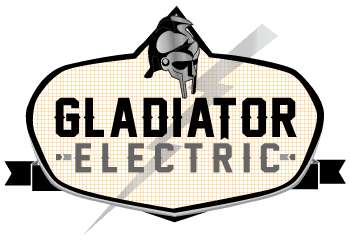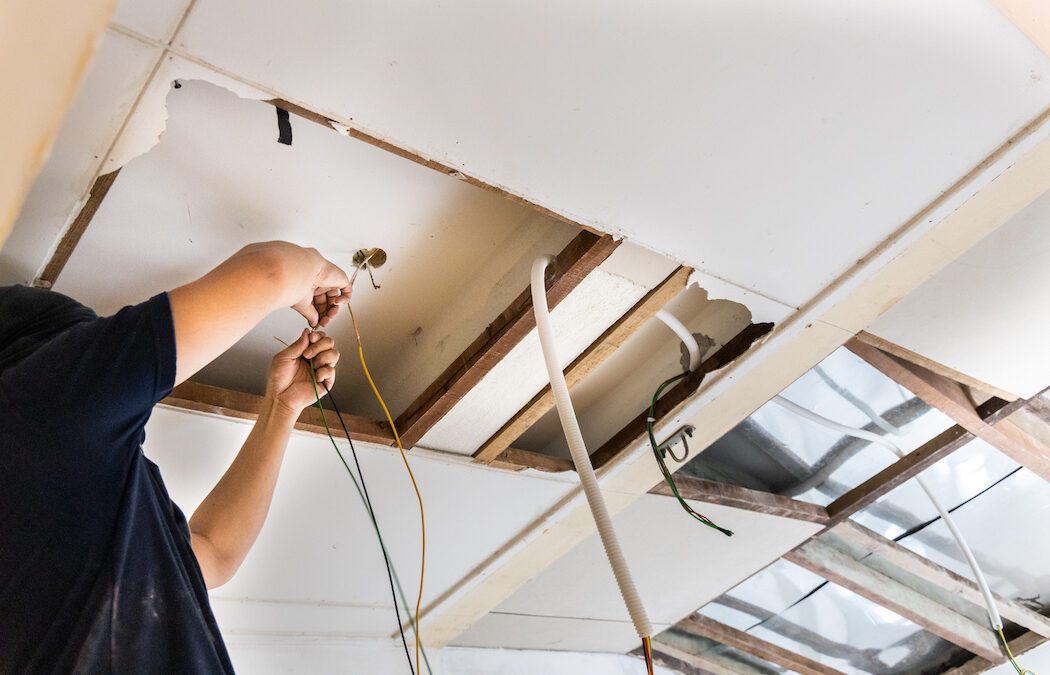Is It Okay to Have Knob and Tube Wiring in New Jersey?
Sometimes It’s not so easy to identify if you have a knob and tube wiring in your home, but it’s highly unlikely if the property is less than 30 years old. Knob and tube wiring was the pioneering electrical system used in homes, commonly installed in houses built between 1880 and 1930.
This system involves single-insulated copper conductors passing through wooden beams on ceramic knobs and running through ceramic tubes when crossing through joists or walls. The separation of the hot and neutral wires, and the air around the wires, served as the method for preventing overheating and electrical fires.
During its heyday, knob and tube wiring was considered revolutionary. It marked a transition from gas lighting and provided a more efficient and safer means of lighting homes and powering devices. Its installation peaked in the 1920s and 1930s before more advanced wiring methods took over.
So, while it may still be present in some older homes, is it okay to have knob and tube wiring in New Jersey?
The answer is ,that it’s not allowed in any new home developments and should be upgraded.
For one, knob and tube wiring is the opposite of what modern electrical systems offer today. It poses obvious safety hazards with a lack of grounding and very low amperage capacity, i.e., electrical fires, short circuits, and shocks.
Why is knob and tube wiring still present in some homes?
One reason is that some people believe it’s still safe, especially if the wiring has no signs of wear and tear.
Another reason is the cost involved in a knob & tube remediation.
But as a homeowner or prospective property buyer in New Jersey, you should be aware of the dangers associated with knob and tube wiring and take immediate steps to replace it. Here’s a rundown of the dangers associated with it:
1 – Insulation Issues
Knob and tube wiring, even when new, is a disaster waiting to happen due to rapid insulation degradation. The insulation used in this type of wiring is typically made from rubber, which naturally degrades over time. The process is accelerated by heat, a typical by-product of electrical currents. As the wires heat up, the rubber insulation dries, hardens, and eventually cracks.
Be reminded that in a knob and tube arrangement, wires are run through open-air spaces, putting them in contact with environmental factors, i.e., humidity and temperature changes. These conditions further exacerbate the breakdown of the insulation.
2 – Overloaded Circuits
Knob and tube wiring are usually rated for only ten amps, which illustrates its lack of amperage capacity. On the other hand, modern homes handle a whopping 100 to 200 amps!
If you’re wondering why this poses a threat, imagine plugging in your average toaster with an estimated power need of 800 watts (equivalent to 8 amps on a 120-volt circuit). Now, add a blender with an estimated power need of 600 watts (equivalent to 6 amps on the same voltage). A total power demand of 1,400 watts from two appliances has already surpassed the capacity of knob and tube wiring.
In this scenario, it’s highly likely that your wires will overheat, causing short circuits or electrical fires.
3 – Lack of Grounding
Knob and tube wiring have no grounding wire, which already is a considerable safety concern. In modern homes, the grounding wire directs excess current in case of a fault and protects people from shocks.
Meanwhile, the knob and tube wiring only has two wires – one for the “hot” and one for the “neutral.” This means that if an appliance develops a fault or a short circuit, the current has nowhere to go but through you. That’s not an ideal situation, is it?
4 – DIY Fixes
Another potential hazard associated with knob and tube wiring is “do-it-yourself” fixes. Since this type of wiring is old and outdated, finding replacement parts or professionals who know how to work with them isn’t easy. As a result, many homeowners resort to making DIY repairs, which are often not done correctly and can cause serious safety concerns.
For example, some homeowners may use electrical tape to secure the insulation, which can easily unravel and expose live wires. Other DIY fixes include using modern wiring methods with knob and tube systems, making them more hazardous than they already are.
5 – Insurance and Legal Issues
Having a knob and tube wiring in your home leads to insurance and legal issues. Some insurance companies will likely refuse to cover a property with this type of wiring due to its potential risks. And if an electrical fire occurs, the homeowner may be held liable for any damages or injuries caused by the faulty wiring.
Most jurisdictions require homeowners to disclose any known issues with the property, including outdated or hazardous wiring. Failure to do so will likely lead to legal consequences and put the homeowner at risk of being sued for damages.
6 – Age
The fact that knob and tube wiring is over 100 years old is already reason enough to replace it. It’s a highly outdated electrical system that no longer meets modern safety standards, putting everyone and everything at risk.
Even newer wiring systems used decades ago are considered outdated and require replacement. So, if your home still has knob and tube wiring, it’s high time to have it replaced with a safer and more efficient electrical system.
What to Do If You Have Knob and Tube Wiring in Your Home
If you’re unsure if your home has knob and tube wiring, You should hire a licensed electrical contractor for a whole home inspection . To See if you may have Knob & tube, check the basement or crawl space. Open up an electrical box near the service panel; separate the wires to see if they have fabric-like insulation surrounding them. Other tell-tale signs of knob and tube wiring include ceramic knobs, cylindrical tubes, and a visible feel of the wires.
If you do have knob and tube wiring in your home, you should act fast to have it replaced with modern electrical systems. As mentioned earlier, while knob and tube wiring was once the standard for electrical installations, it poses significant safety concerns compared to modern systems. And as a homeowner, ensuring the safety of your property and family should always be a top priority.
Now, if you’re planning to purchase a home in New Jersey and you find out that there’s a knob and tube wiring, it’s not okay to leave it as is. Consult a professional electrician to discuss your options for replacing this outdated, hazardous electrical system. Don’t compromise your safety – the last thing you want is to experience an electrical fire or shock due to knob and tube wiring. Better safe than sorry.
Last Thoughts On Knob and Tube Wiring In New Jersey
While knob and tube wiring is not illegal in New Jersey, it is considered outdated and may pose safety risks. New installations of this type of wiring are not permitted under current building codes, and existing knob and tube systems may face challenges with insurance coverage and compliance with safety standards.
Homeowners in New Jersey are advised to consult with a licensed electrician to assess the condition of any existing knob and tube wiring and consider upgrading to a modern, safer electrical system. This approach not only ensures compliance with current safety regulations but also enhances the overall electrical functionality and value of the property.
If you have knob and tube wiring, please consider giving Gladiator Electric a call & schedule a whole home inspection. We can help modernize your electrical system at a reasonable cost. Just fill out our contact form for a virtual estimate.
Mike has been in the industry since 2000 and is the owner of Gladiator Electric. After working for local Bergen County established electrical contractors and completing a 5 year state-sanctioned apprenticeship program, Mike become a foreman for a large company where he remained for over a decade. As an accomplished Martial artist in Brazilian jiu jitsu , Muay Thai & boxing Mike has learned focus, tolerance, fairness, humbleness, discipline and personal growth.




Recent Comments